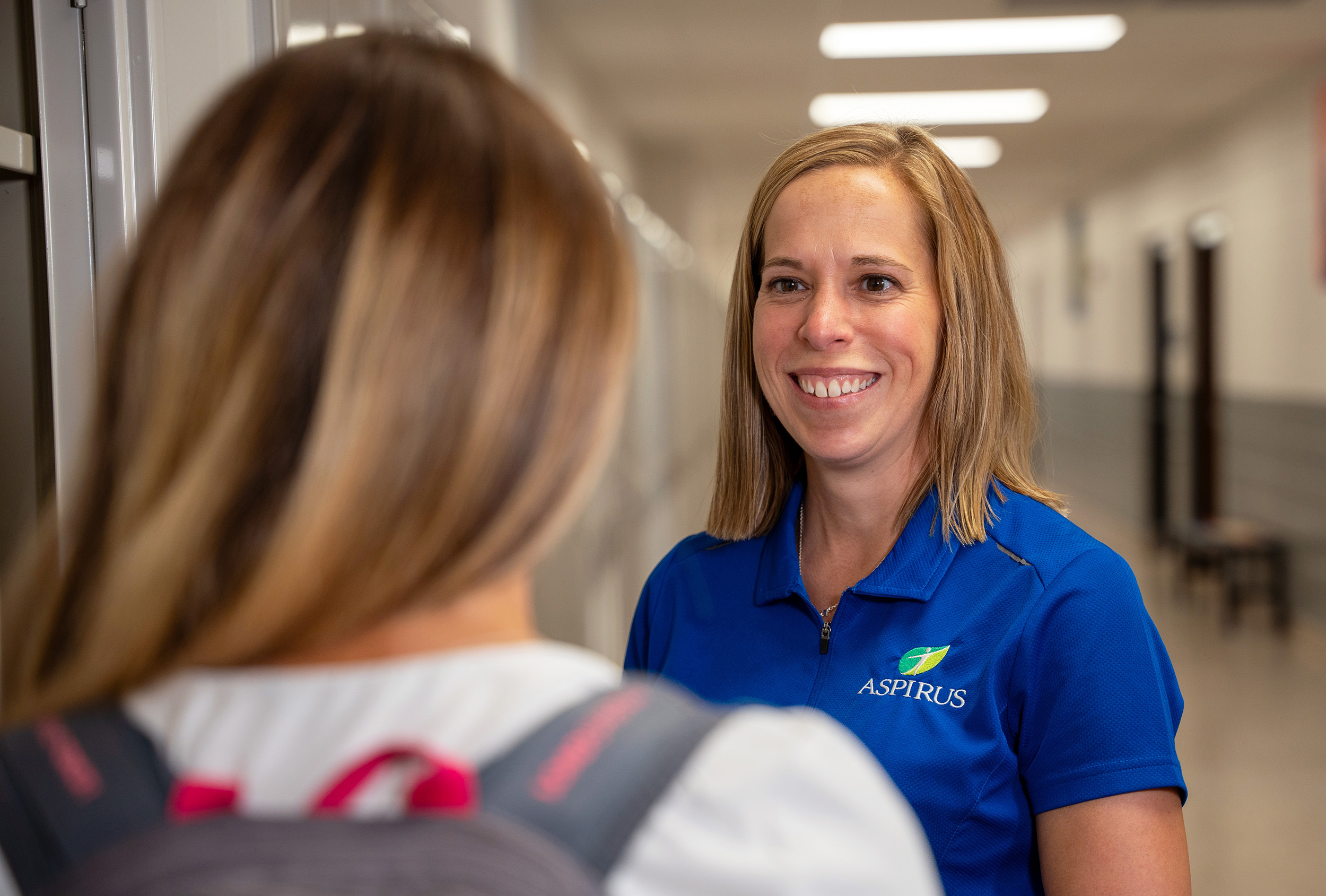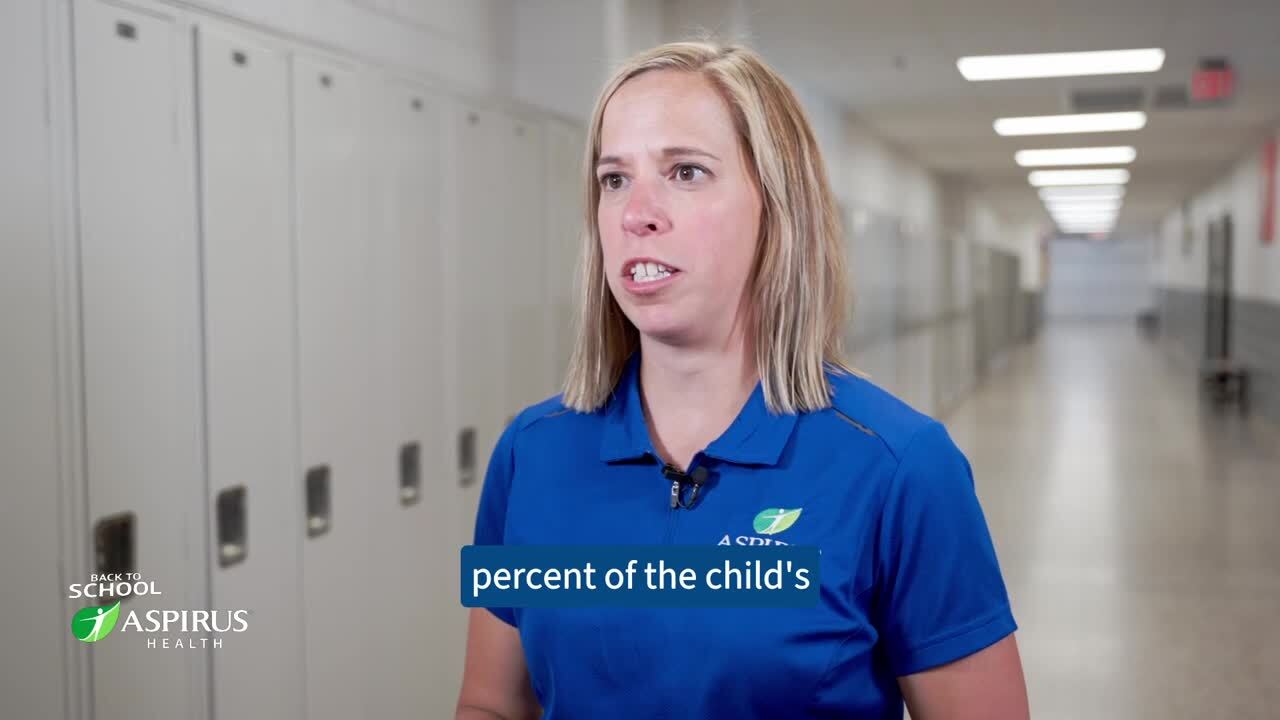Aspirus has your child’s back with these helpful backpack tips
8/9/2023

Megan Stankowski, Aspirus Athletic Trainer
Backpacks
are a practical and useful way to get textbooks and supplies to and from
school. When used properly, they should ease your child’s load, not make it
worse.
“Improper backpack usage among children can lead to
neck pain, headaches, back pain and hip pain,” says Megan Stankowski, PT, DPT,
LAT, Physical Therapist, Athletic Trainer with Aspirus. “Preventing these
injuries may require parents to check in, observe and gently remind their kids
to make some adjustments to how they use their backpacks.”
The American Academy of Pediatrics and the Pediatric
Orthopedic Society of North America offers some tips for parents to help
children wear their backpacks safely and correctly:
Choose the right backpack. Your child’s
backpack should have two broad, padded shoulder straps, a padded back, a waist
or chest strap, and compartments. These features help distribute the weight of
the contents more evenly throughout the body.
Educate your child about proper backpack wear. Keep
straps on both shoulders and use the waist strap. Adjust straps to fit
snugly.
Pack safely. Help your child understand how to
distribute the weight properly. Put the heaviest items low and near the
center of the back. Make sure
the bottom of the backpack rests in the curve of the lower back.
Check the weight. Make sure your child is not
carrying more than 15 percent of his or her body weight in their backpack. If
you notice them leaning forward to support the backpack’s weight, then it’s too
heavy.
Lighten the load. Encourage your child to clean
the backpack weekly and take out unneeded items, store items in a locker at
school when possible, and take only what’s needed to school. Carrying heavier
items in their arms will also alleviate some of that extra weight.
Stankowski says kids
aren’t likely to relate any pain they’re experiencing to their backpack, so
it’s important to check in with them.
“Parents can catch
signs or symptoms of injury by simply asking their child how they like their
backpack or how it feels,” says Stankowski. She says this may prompt your child
to share any discomfort they may have. “Also observe them. Are they leaning to
the side or leaning forward? The child is not going to catch that as often as
the parent, and correcting these habits can prevent injuries.”
If adjusting how your
child is wearing their backpack doesn’t eliminate pain, seek help from their
primary care provider or physical therapist. To find an Aspirus provider, visit
www.aspirus.org/find-a-provider.

Back to all Posts